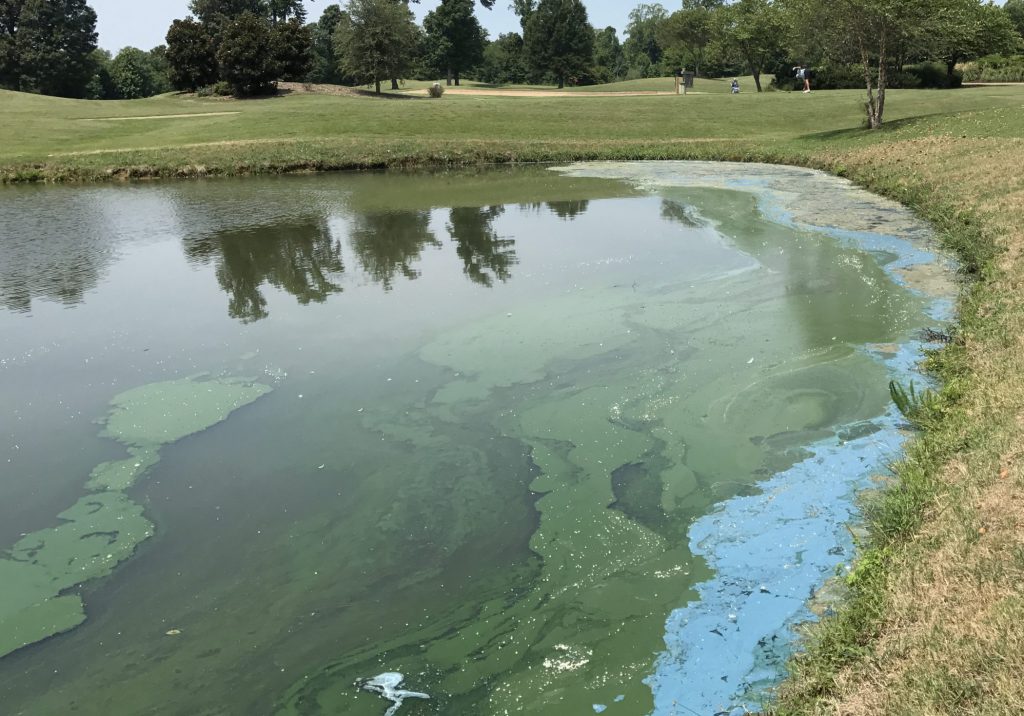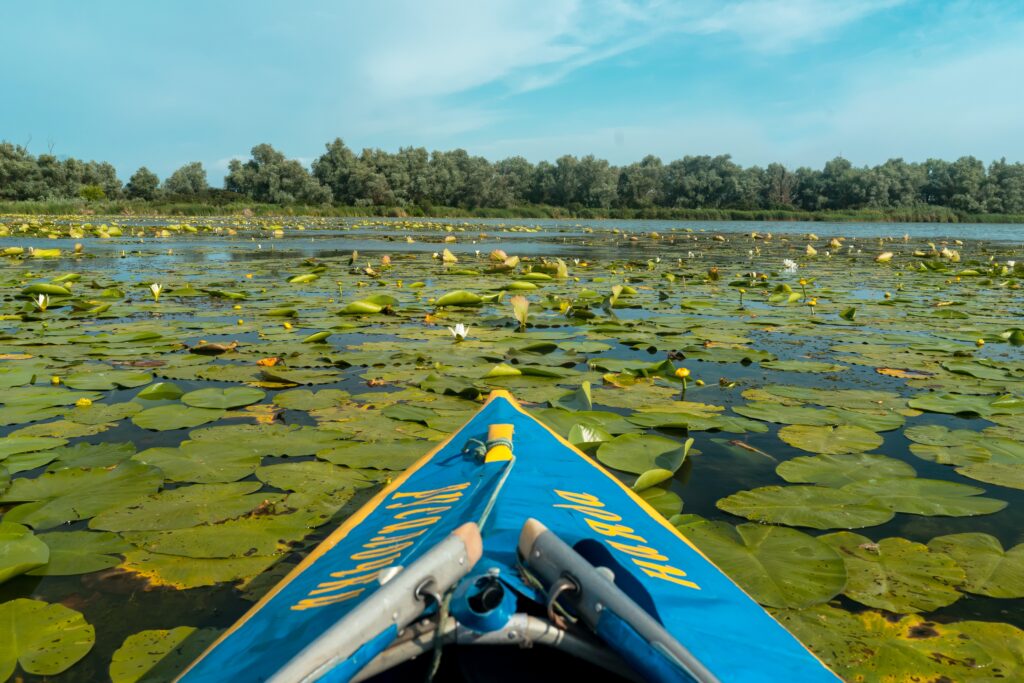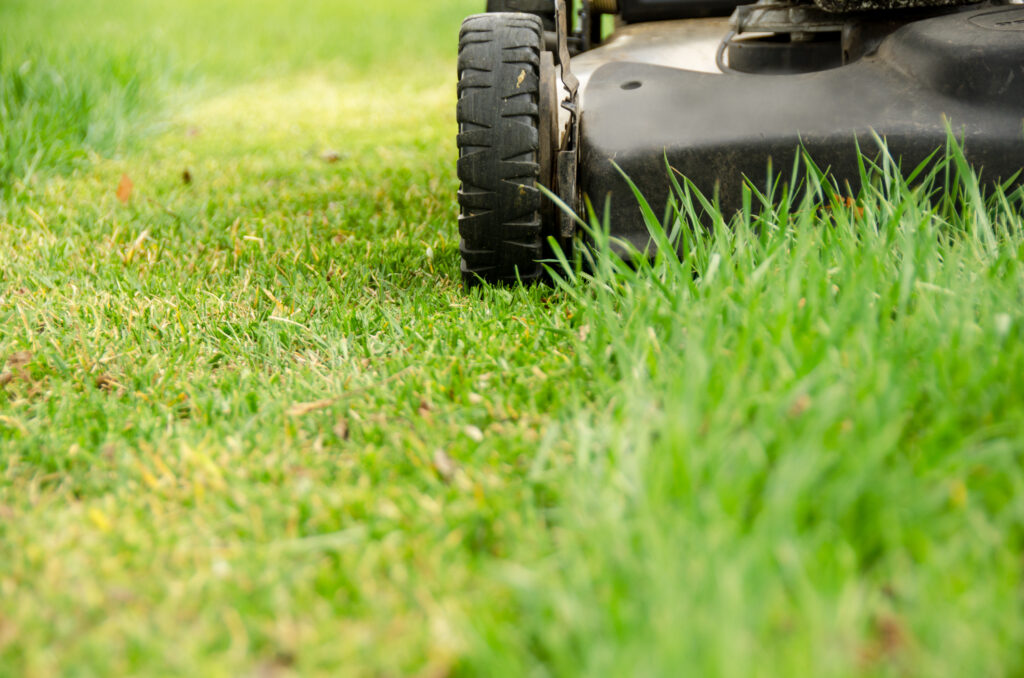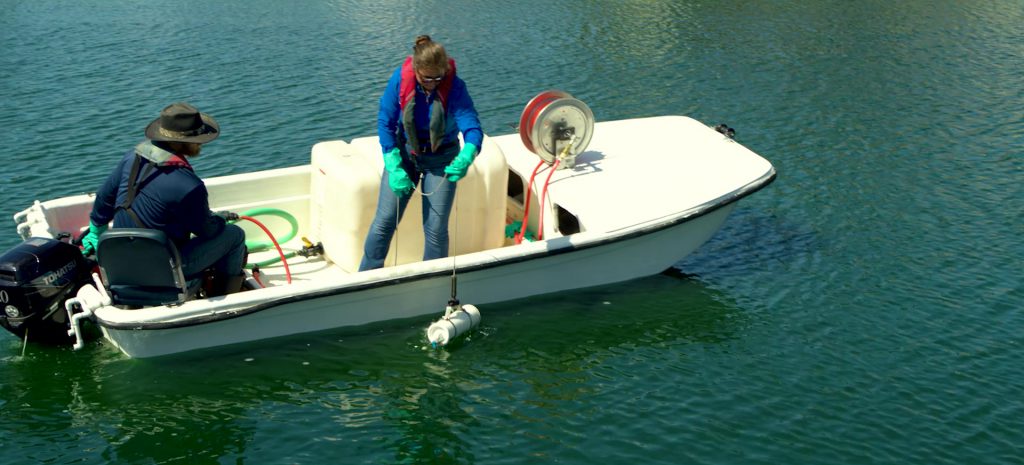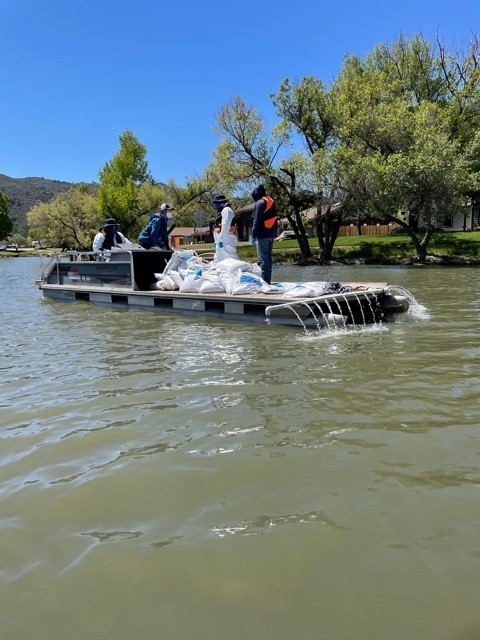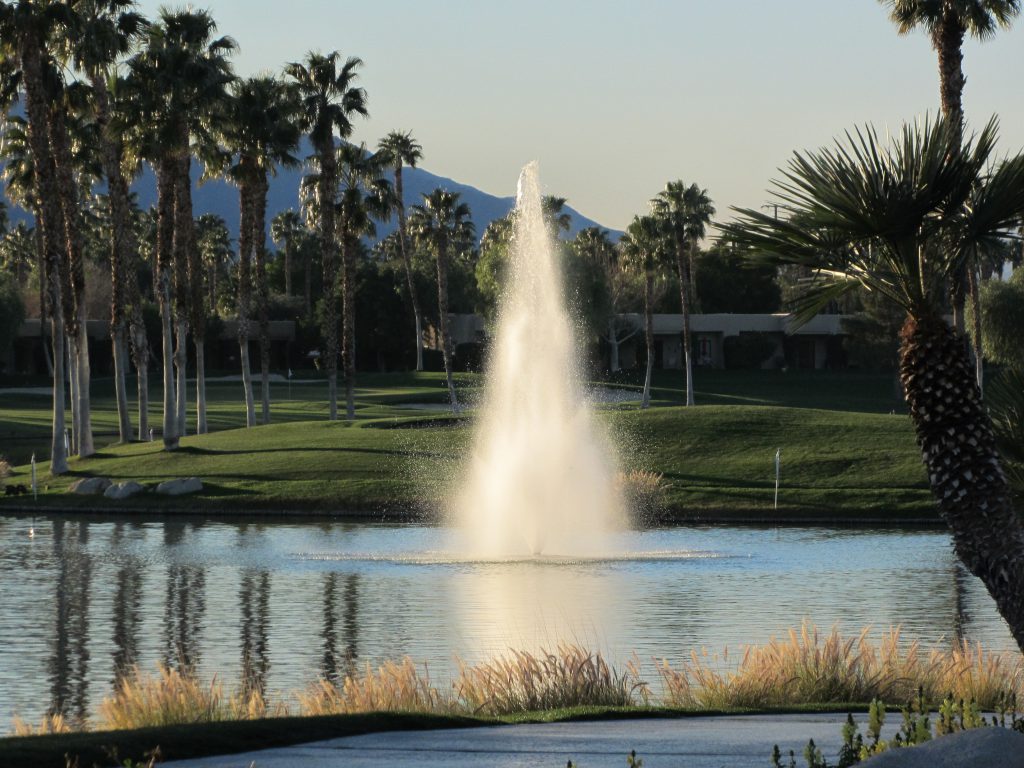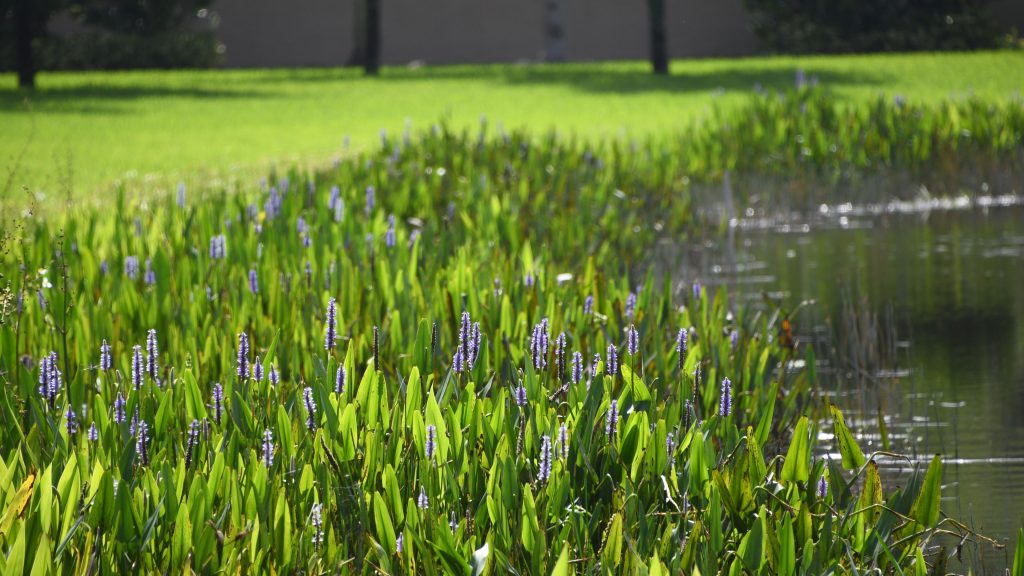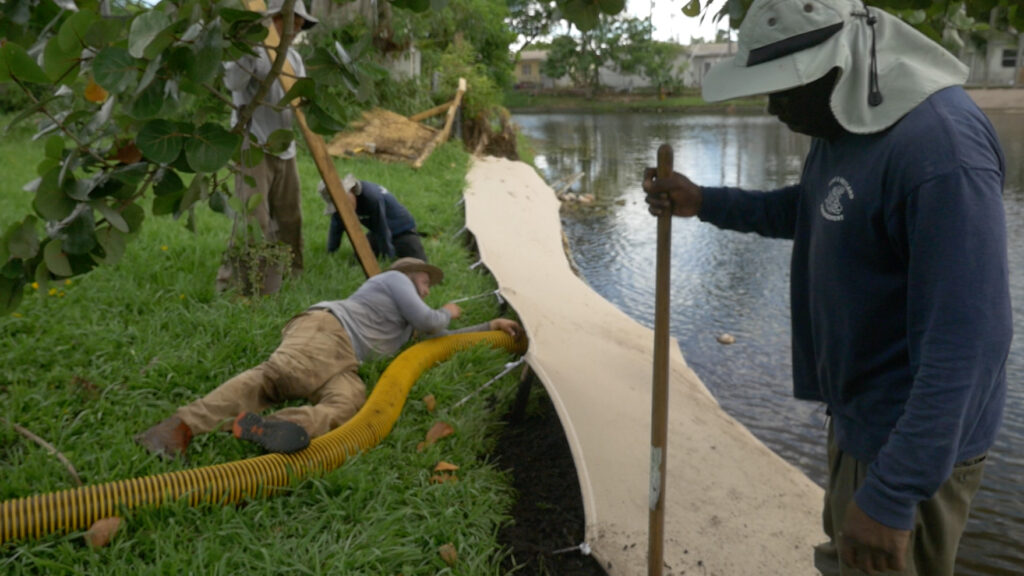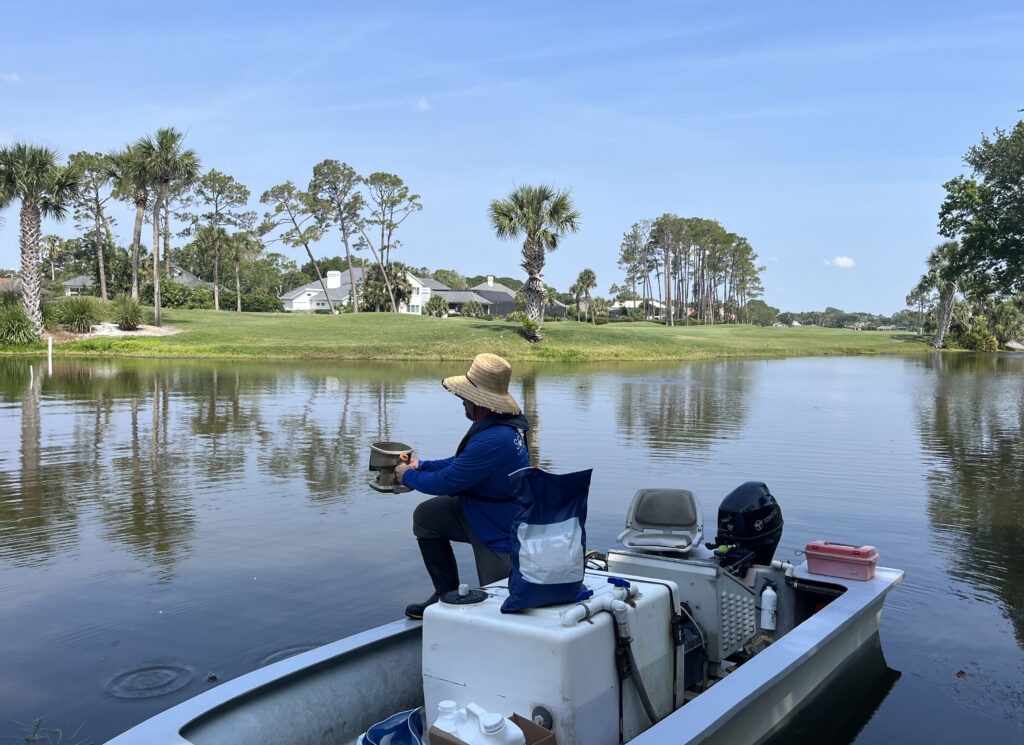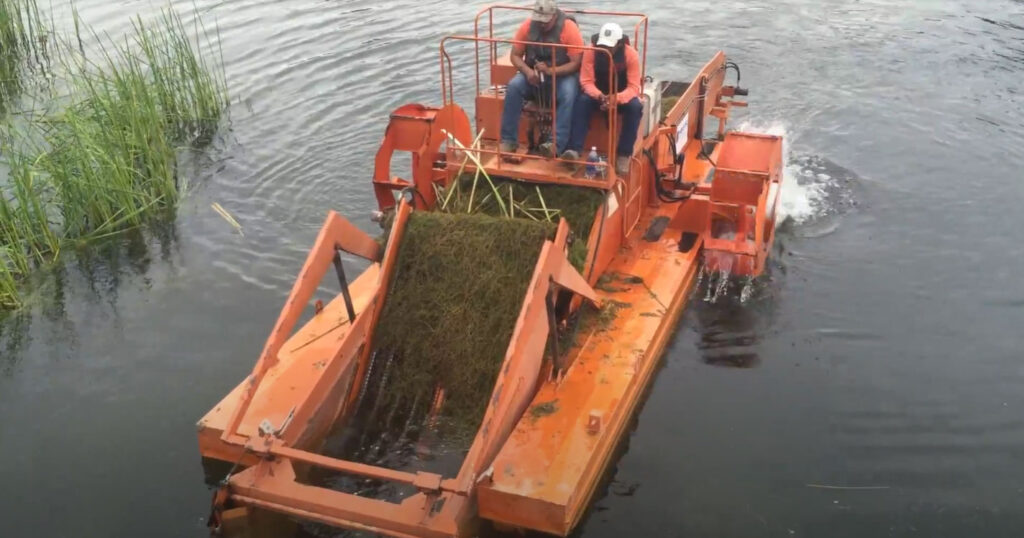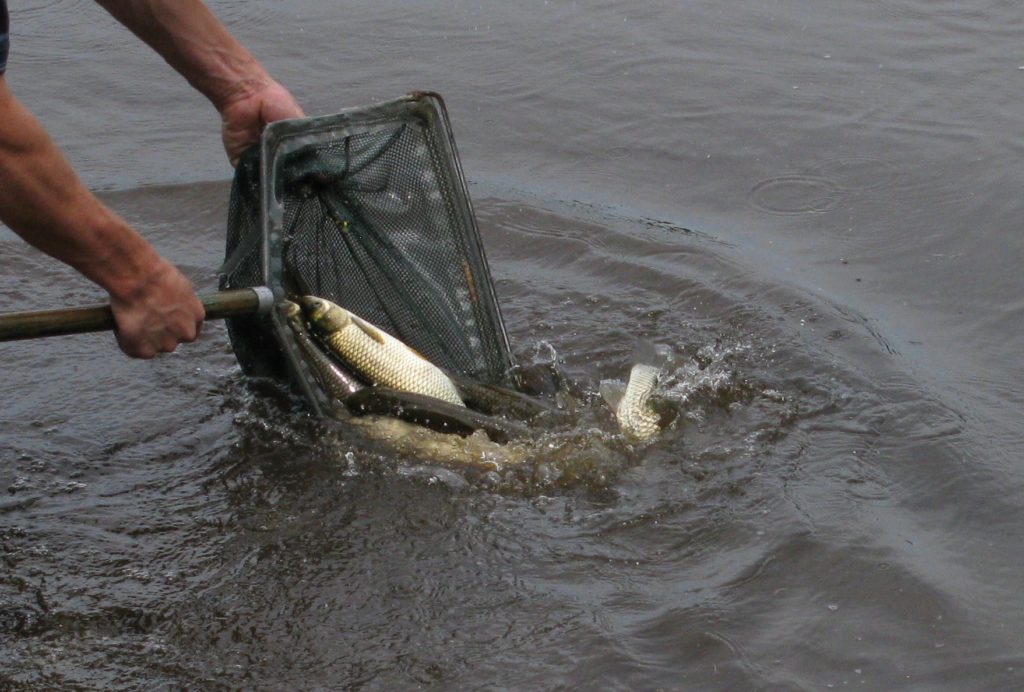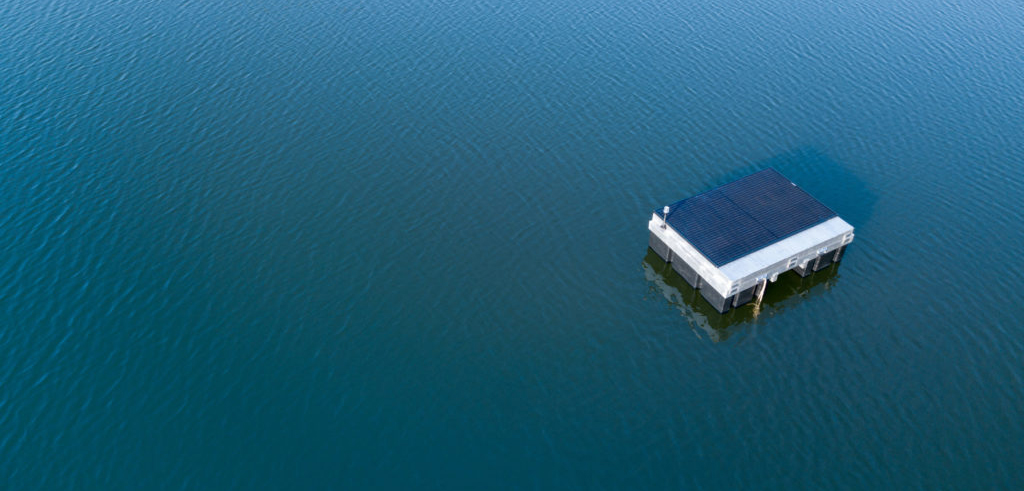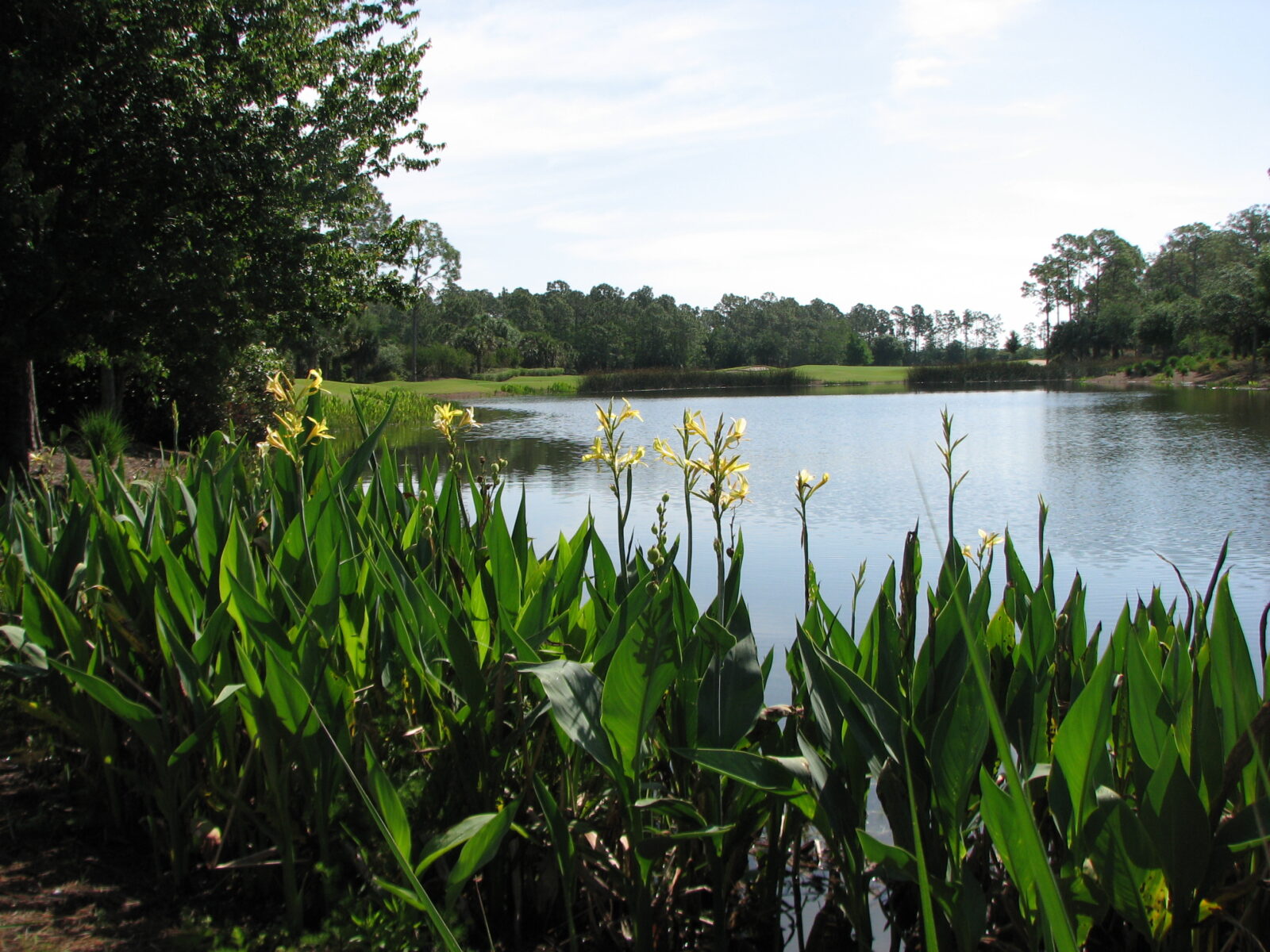
Late Season Aquatic Weed and Pond Algae Control Tips
Aquatic weeds and algae are always an unwelcome sight, no matter what time of year they emerge. In addition to creating an eyesore, clogging stormwater equipment, and contributing to the degradation of water quality, undesirable growth can impede swimming, fishing, boating, and other warm-weather activities. It’s common for weeds and algae to reach nuisance levels during mid to late summer. This can occur for several reasons, many of which can be predicted and counteracted as needed to maintain clean, healthy water for all to appreciate.
Weeds & Algae Develop Due to Inconsistent Management
As the year unfolds, lake and pond owners look forward to the arrival of summer to enjoy the water. This excitement often motivates people to diligently manage their waterbodies or contract for one-time maintenance work. However, as summer progresses, the consistency of management practices may wane. This gradual decrease in efforts can reverse the progress made earlier in the year and ultimately lead to a resurgence of nuisance growth. Ongoing monitoring and maintenance through an Annual Management Program can help prevent this growth before it occurs.
Environmental Conditions Can Impact Water Health
Hot temperatures and excessive sunlight during the mid to late summer months create ideal conditions for the rapid growth of aquatic weeds and algae. Furthermore, these environmental conditions can naturally deplete dissolved oxygen (DO), which is necessary for fish and beneficial aquatic life to thrive, and aids in the decomposition of organic materials. Without sufficient DO, lakes and ponds can become unhealthy, unsightly, and more prone to fish kills.
Human Activity Can Spread Weeds and Promote Algae Growth
Increased human activity near the water during this time may significantly contribute to nuisance growth. As people and dogs tread around the water’s perimeter while fishing, swimming, or simply enjoying nature, the shoreline slowly deteriorates. Eroded sediment can create bottom muck and release nutrients in the water that fuel weeds and algae. Nutrient levels can also increase when people leave behind food, trash, and pet waste after spending time on the water. Additionally, the increased use of lawn and garden fertilizers during the summer, as well as improper disposal of grass and yard clippings, commonly contribute to nutrient loading in nearby lakes and ponds. Worst of all, invasive weeds are more likely to be spread and rapidly populate new ecosystems through recreational activities like boating and fishing.
What Are Common Types of Aquatic Weeds?
Aquatic weeds and algae fall into several categories that can affect each region of the country differently. Staying educated about common forms and species can help stakeholders better identify undesirable growth early on, allowing them to intervene before growth reaches nuisance levels.
Submerged – Hydrilla, Curleyleaf Pondweed, Fanwort, Eurasian Watermilfoil
Floating – Water Hyacinth, Water Lettuce, Giant Salvinia, Water Chestnut
Emergent – Water Primrose, Torpedograss, Alligatorweed, Smartweed
What Are Common Types of Algal Species?
Filamentous – Spirogyra, Anabaena, Spirulina, Lyngbya, and Pithophora
Planktonic – Chlamydomonas, Chlorella, Euglena, Microcystis, and Tabellaria
Macro-algae – Chara spp. and Nitella spp.
Once aquatic weeds and algae appear, swift intervention is important to reestablish control. Without a plan in place, minimal growth can lead to vast infestations – seemingly overnight – that may require herbicides and algaecides to temporarily contain. But prevention is key. That’s why Aquatic Experts recommend establishing comprehensive management programs that target a wide spectrum of vulnerabilities that permit nuisance growth.
Test Pond Water Quality
Water quality testing is a fundamental tool used by Aquatic Experts to evaluate many different water quality parameters, including nutrient concentrations, DO levels, pH, conductivity, and ammonia content. Valuable insights can be gained by analyzing the distinct composition of these elements, as well as identifying the presence of toxin-producing algal species like cyanobacteria (also known as blue-green algae). This information provides a framework for developing tailored management strategies that identify imbalances early and promote a healthy aquatic environment.
Manage High Nutrient Levels
Introducing naturally occurring nutrient remediation products into the water can effectively mitigate the impact of excess nutrients, either by binding with and “deactivating” nutrients or physically capturing and removing them. By achieving a more balanced water quality, the growth of aquatic weeds, algae, and toxic cyanobacteria can be reduced and prevented. These products play a crucial role in maintaining ecological balance and slowing eutrophication – the natural “aging” process of the waterbody.
Install Fountains or Aeration Systems
Dissolved oxygen (DO) plays an important role in converting excess nutrients to forms that are not available for uptake by nuisance weeds and algae. To improve circulation and maintain optimal DO levels throughout the summer months, Aquatic Specialists may recommend floating fountains, surface aerators, or submersed aerators. The choice of equipment may depend on factors like the waterbody’s size, depth, budget, and aesthetic preferences. In many cases, a combination of aerators may be recommended to sufficiently aerate the entire water column.
Plant A Native Shoreline Buffer
Robust vegetative buffers consisting of native plants are a cost-effective solution to help protect delicate shorelines and filter excess nutrients and pollutants contained in stormwater runoff. Aquatic Specialists recommend native plant species that grow approximately knee-high and develop deep, complex root systems to hold soil in place. Maintaining vegetative buffers is typically very simple and economical, requiring only routine trimming and monitoring to control the growth of unwanted plants.
Repair Lake Shoreline Erosion Damage
Shorelines that exhibit severe deterioration may be candidates for restoration using bioengineering technologies. During the restoration process, Aquatic Experts collect hundreds to thousands of pounds of sediment into bag-like containment materials composed of knitted mesh. It can be reshaped to fit the desirable slope and length of the shoreline, with the added benefit of extending waterfront property in many cases. Once anchored in place, it can be sodded and planted with beneficial vegetation, helping to provide many years of stability and erosion prevention.
Introduce Beneficial Bacteria Into Your Pond
Beneficial bacteria act as probiotics to break down and process muck and decomposing organic matter, helping to limit the release of excess nutrients that exacerbate water quality issues. Additionally, beneficial bacteria helps support a robust and diverse aquatic ecosystem that is less vulnerable to nuisance growth.
Physically Remove Weeds with Mechanical Tools
Mechanical harvesting or hand pulling can be effective natural solutions for the physical removal of floating aquatic weeds. However, because many floating weeds reproduce by fragmentation, recurring removal may be necessary to maintain or completely eradicate undesirable plant species. Mechanical hydro-rakes, which physically scoop out detritus from the bottom can be used to help eliminate submersed aquatic weeds.
Control Weed Growth via Grass Carp
Depending on the waterbody type and local regulations, triploid (sterile) grass carp can be stocked to help consume nuisance growth. However, grass carp are voracious eaters and may also consume desirable plants. It’s important to consult with an Aquatic Specialist to determine if grass carp stocking aligns with your goals and ensure that you have the proper permits.
Control Algae Growth with Ultrasonic Frequencies
360-degree ultrasonic frequencies can be used as an alternate natural solution to manage green algae, cyanobacteria, and biofilms. SOLitude’s partner, Water IQ Technologies, offers self-reliant solar-powered systems that include real-time water quality monitoring. The systems are safe for native plants and wildlife and can be used continuously throughout the summer to keep nuisance growth in check.
Get A Handle On Algae & Weeds Before Fall
Late summer is an important time to maximize the warm, long days that remain before the seasons change again. A lake management partner can take the weight of responsibility off of stakeholders, allowing them to focus on using and enjoying their waterbodies rather than worrying about clogged stormwater equipment, the presence of algal toxins in irrigation water, or submersed weeds that snare fish hooks and entangle the legs of swimmers. Through an ongoing Annual Management Program, Aquatic Experts keep a professional eye on the water all year round, ensuring that it is balanced, beautiful, and functional at all times – not a constant source of stress.
SOLitude Lake Management is a nationwide environmental firm committed to providing sustainable solutions that improve water quality, enhance beauty and preserve natural resources.
SOLitude’s team of aquatic scientists specializes in the development and execution of customized lake, stormwater pond, wetland and fisheries management programs. Services include water quality testing and restoration, algae and aquatic weed control, installation and maintenance of fountains and aeration systems, shoreline erosion control, muck and sediment removal and invasive species management. SOLitude partners with homeowners associations, golf courses, private landowners, businesses and municipalities. SOLitude Lake Management is part of Rentokil, a leading business services company, operating across the United States, Canada and Puerto Rico.
For more information, visit SOLitude Lake Management at solitudelakemanagement.com, and connect on Facebook, LinkedIn and Twitter.








